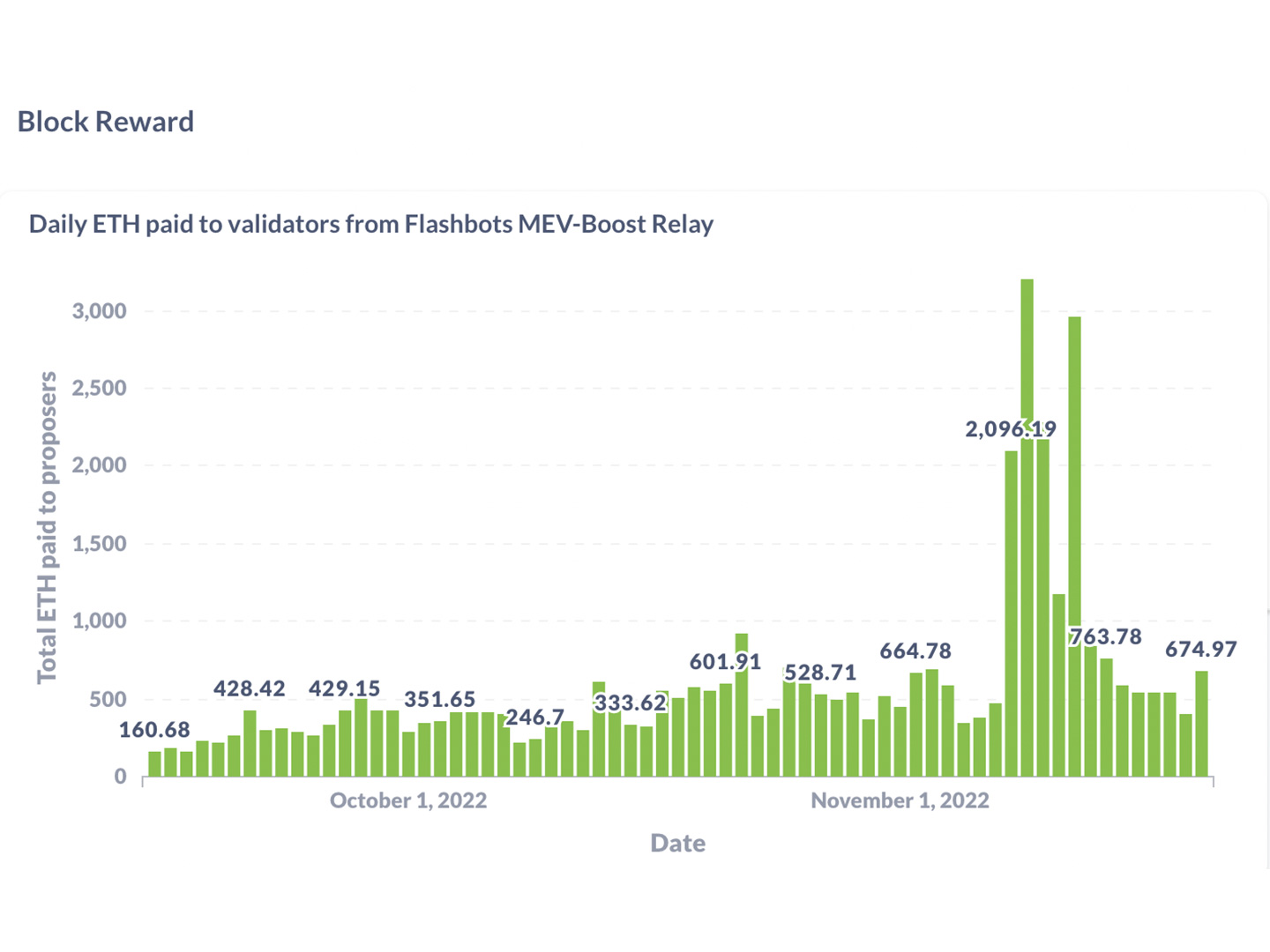This month’s collapse of FTX drove a dramatic increase in the profitability of running the Ethereum network, as the crypto industry ran into the nearly immutable law that when markets get chaotic, the best place to be is at the heart of the action.
Ethereum validators – who, following the Merge in September, are responsible for running the blockchain – saw profits from MEV (maximal extractable value) spike as FTX faltered, according to data from Flashbots.

Block Reward Daily ETH paid to validators from Flashbots MEV-Boost Relay (Flashbots)
MEV is a cornerstone of how crypto trades, with some parallels to things like arbitrage in conventional markets, but with big differences. It measures the amount of additional income that validators can earn by tinkering with and optimizing the order in which blockchain transactions are recorded. Detractors argue it’s an unfair tax on the ecosystem.
One of the tools that Ethereum validators can use to circumvent some controversial MEV practices is MEV-Boost, a middleware component created by Flashbots, that allows validators to request blocks from a network of builders. Validators connect to MEV-Boost through relays, like the one that Flashbots runs, to earn MEV.
Users of Flashbots’ MEV-Boost platform raked in a peak of 3,203 ETH in rewards on Nov. 9.
Since MEV-Boost is the primary tool, and Flashbots currently dominates about 79% of blocks relayed, most of the data reflecting MEV activity is reflected their datasets.
When gigantic news roils any financial market, prices often move fast, up or down. And that can cause major price dislocations, creating profit opportunities for people – be they market makers in stocks or validators running Ethereum – standing in the middle.
“Volatility is MEV fuel,” said Chris Piatt, the co-founder of Eden Network, which runs a relay. “Any big news like this [the FTX implosion] that moves markets correlates with strong builder/searcher performance.”
The spike in MEV happened as perceptions about FTX’s health worsened, prompting larger exchange rival Binance to swoop in with a bailout – only to back out the following day, on Nov. 9. Panic spread throughout crypto.
People rushed to yank money out of FTX. That movement of crypto also meant that there were more transactions eligible for MEV-ing, which may also help explain the surge in MEV profits, particularly over the period of Nov. 8 to Nov. 12.
“The more action on the market, no matter if up- or downwards, the more MEV [is available],” said Toni Wahrstätter, an Ethereum researcher who has created his own MEV-Boost monitoring dashboard. “Theoretically, if there is no one trading, then there is also no MEV.”
Read more: What’s Going On With Ethereum’s MEV-Boost?







